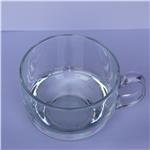2-Methoxy-4-methylphenol: Synthesis and Multifunctional Applications
MMP, or 2-methoxy-4-methylphenol, is defined as the main output of the hydrodeoxygenation process of vanillin, resulting from the hydrogenolysis of vanillyl alcohol. It is recognized for its potential as a biofuel. 2-Methoxy-4-methylphenol is used for blending baking and smoked food flavors. Excellent additive and modifier in artificial Ylang-Ylang, Cassie-bases, Jasmin bases, Lily, Gardenia, etc. Finds use in flavor compositions for imitation Vanilla, Clove, various fruit compositions, Rum flavors, etc. and in Nut-Nougat flavor bases. Concentration will be about 0.02 to 1 ppm in the finished consumer product. In beverages, however, it may be as high as 10 to 20 ppm.

Selective Catalytic Transfer Hydrodeoxygenation of Vanillin into 2-Methoxy-4-methylphenol
The efficient transformation of renewable lignocellulosic biomass, with a specific focus on lignin, a substantial yet underexploited component of biomass, into usable fuels and chemicals, has garnered attention as a viable approach to tackle the pressing issues posed by escalating transportation fuel requirements and environmental pollution caused by fossil-fuel. Lignin, a key part of lignocellulosic biomass, contains complex three-dimensional, cross-linked structures formed by its monolignol components, including p-coumaryl alcohol (H-unit), coniferyl alcohol (G-unit), and sinapyl alcohol (S-unit). With three distinct oxygenated functional groups (aldehyde, ether, and hydroxyl), VAN can undergo selective hydrodeoxygenation to produce 2-methoxy-4-methylphenol (MMP), a promising candidate for future biofuel applications, and for its use in fragrances and intermediate in pharmaceutical synthesis. To date, extensive research has been dedicated to augmenting the catalytic efficacy of VAN hydrodeoxygenation to produce 2-methoxy-4-methylphenol. Diverse noble metal catalysts, including Pd, Ru, and Au, have undergone a thorough investigation, yielding commendable catalytic outcomes. Nonetheless, the impediments of elevated cost, limited terrestrial abundance, and susceptibility to deactivation hinder their large-scale implementation. Consequently, the imperative pursuit involves the development of non-noble metal catalysts with remarkable activity, cost-efficiency, and sustained stability. Several non-noble transition metal-based catalysts have been documented for VAN hydrodeoxygenation to yield MMP.[1]
In summary, a sustainable catalyst of transition metals, Ni NPs supported MMT clay, was developed for the selective conversion of VAN into 2-methoxy-4-methylphenol via CTHDO. The comprehensive analysis demonstrated that the Ni(10 %)/MMT catalyst successfully facilitated VAN′s CTHDO. The conclusion was drawn after conducting meticulous control experiments, thorough characterization assessments, and poisoning tests. These evaluations established the importance of the MMT support‘s surface acidity in steering the catalytic reaction. The balance of Ni NPs content and surface acidity of MMT emerged as pivotal factors influencing catalytic activity. The strong interplay between the MMT support and Ni NPs facilitated hydrogen adsorption and adsorption of reactants. IPA was adsorbed on the MMT surface, and following MPV, hydrogen was produced that was adsorbed on the Ni NPs, which facilitated hydrodeoxygenation. The Ni(10 %)/MMT catalyst demonstrated impressive recyclability, stability without metal loss, and sustained efficacy in converting lignin bio-oil derivatives. It suggests its potential as an eco-friendly, sustainable alternative to precious metal-based catalysts for hydrodeoxygenation. The presented catalyst shows better VAN conversion and selectivity toward the 2-methoxy-4-methylphenol than previously reported Ni NPs-based catalysts. The research introduces a greener, more conscious approach to producing valuable chemicals and contributes significantly to advancing eco-friendly catalytic technologies.
Metalloporphyrin-catalyzed aerobic oxidation of 2-methoxy-4-methylphenol
Vanillin (4-hydroxy-3-methoxybenzaldehyde) is one of the most important flavors and has attracted considerable synthetic interest owing to its importance in various fields; it is extensively used as fragrance in food preparations, intermediate in the production of antifoaming agents, herbicides or drugs, ingredient of household products such as air-fresheners and floor polishes. While all of these methods are useful in its own right, each suffers from one or more limitations including long production time, difficult purification, relatively high costs and necessity of selected strains of microorganisms. Besides, there are few reports on the homogeneously or heterogeneously catalytic direct oxidation of 2-methoxy-4-methylphenol by oxygen to vanillin. As a continuation of our research involving metalloporphyrins-catalyzed oxidations with dioxygen, we now report a novel catalytic system for the direct oxidation of 2-methoxy-4-methylphenol to vanillin by using molecular oxygen (1 atm) as oxidant and metalloporphyrin as the catalyst under mild conditions. The optimum conditions of the process were obtained through investigating the effects of various reaction parameters such as the type of metalloporphyrin used, catalyst loading, temperature, reaction time, the amount of NaOH, solvent, the amount of solvent and the flow rate of oxygen on the conversion of 2-methoxy-4-methylphenol, and selectivity of vanillin. Furthermore, a possible mechanism for the observed catalytic oxidation reaction was also proposed.[2]
In summary, researchers have developed simple metalloporphyrins for catalytic oxidation of 2-methoxy-4-methylphenol with molecular oxygen. The main oxidation product was vanillin. Under mild conditions, this research realized 74% selectivity for vanillin at 87% conversion of 2-methoxy-4-methylphenol. Further experiments are underway to fully elucidate the reaction mechanism. Continued development of metalloporphyrin-based catalytic oxidation of hydrocarbons also remains.
References
[1] Atul Kumar, Prof. Dr. R. S., Dr. Rajaram Bal. (2024). Ni Nanoparticles Supported Montmorillonite Clay for Selective Catalytic Transfer Hydrodeoxygenation of Vanillin into 2-Methoxy-4-methylphenol. ChemCatChem, 16 9.
[2] Qing Jiang. (2013). Metalloporphyrin-catalyzed aerobic oxidation of 2-methoxy-4-methylphenol as a route to vanillin. Journal of Molecular Catalysis A: Chemical, 373, Pages 121-126.
You may like
Lastest Price from 2-Methoxy-4-methylphenol manufacturers

US $0.00-0.00/KG2025-06-28
- CAS:
- 93-51-6
- Min. Order:
- 1KG
- Purity:
- 99.0%
- Supply Ability:
- 10000KGS

US $10.00/KG2025-04-21
- CAS:
- 93-51-6
- Min. Order:
- 1KG
- Purity:
- 99%
- Supply Ability:
- 10 mt


